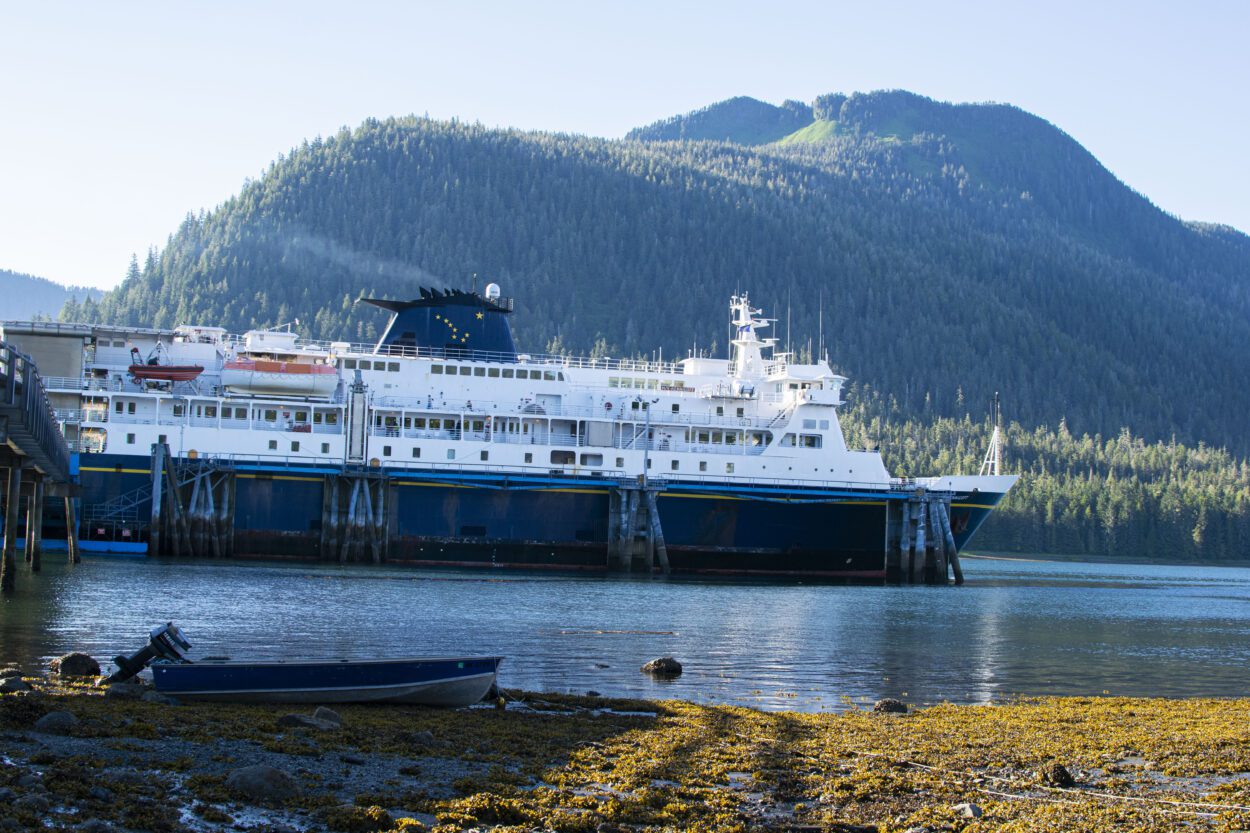
The Alaska Marine Highway System’s plan for the next 20 years includes building six new hybrid ferries, increasing port calls, and recruiting Alaskans for jobs. New details of the plan were discussed at a day-long meeting in Anchorage on Oct. 23.
Listen to the story:
The plan stems from over a year of data crunching through engineering and research groups and gathering information from regional ferry groups and the public. The plan still needs to be approved by Governor Mike Dunleavy and the Alaska Legislature following a month-long public comment period.
However, the volunteer board that advises the ferry system, the Alaska Marine Highway Operations Board, voiced its support.
“It’s a new day,” said board member Wanneta Ayers. “This is a watershed moment to have this plan. And so, I’m hopeful.”
Hope is what many coastal Alaskans have been hanging on to in recent years as ferry services diminished. Some communities that used to get weekly service, are down to once a month or none in the winter.
The long-range plan aims to double port calls over the next two decades. Officials with the Alaska Marine Highway System (AMHS) think that’s possible, in part, by replacing the 50 and 60-year-old vessels with six new hybrids. The old ships break down, and there aren’t enough replacement ferries in the fleet, so vessels get docked, and sailings get canceled.
“They’ll just be more efficient vessels,” said AMHS Marine Director Craig Tornga. “And they’ll be purposely designed for their intended routes.”
Tornga said the hybrid fleet will be more reliable because of their backup battery systems.
“All of our boats will be hybrid because we always want redundancy in the system,” he said.
How the new fleet will be paid for isn’t clear. For certain, it won’t be from fares alone and the ferry system will continue to rely on federal grants. Recent federal awards come from the Bipartisan Infrastructure Law, which has designated $700 million to Alaska’s ferry projects.
Still, that only goes so far. Ferries are expensive – a new large one costs over $300 million. Governor Mike Dunleavy has vetoed millions in state funding for the marine highway system nearly every year he’s been in office. ( $5 million in 2019, $13 million in 2020, $8.5 million in 2021, $10 million in 2023, and another $10 million this year.)
The long-range plan is looking at new ways to raise revenue such as adding gift shops in terminals. Board Chair Shirley Marquardt said the plan will hopefully bring more stable revenue.
“This is never going to be a business, because it’s a function of the state,” she said. “However, the more it can operate as a business, the more it can operate with autonomy, the better chance the system has of avoiding so many snares and pitfalls we’ve had in the past that have done nothing, nothing good for the system.”
Who will run the future ferries is another story. Higher-level maritime workers need special certifications. But the system has long suffered from a shortage of those workers. The shortage even led to some vessels being tied up. Tornga said the long-range plan seeks to recruit Alaskans because they turn over less often than workers from out of state.
“We’re going to have a pathway as we start hiring Alaskans working in the high schools, introducing them to the maritime industry, and then having the system in place where they can see their pathway,” Tornga said.
AMHS also wants to digitize its system for scheduling, timesheets, work-rest logs, and crew certifications. Tornga said that’s still all on paper.
“We’ve been, I think I could say, in a 20-year time warp in this category, where we still have paper systems for payroll and everything else,” Tornga said.
The long-range plan includes infrastructure improvement projects for the system’s terminals and docks. They’re considering a new floating dock in Yakutat, a road built across Baranof Island to Sitka, and a new connection to the Lower 48.
One terminal still in question is at Prince Rupert, British Columbia. It closed five years ago, eliminating road access for many Southeast residents.
Ketchikan resident Lynne Dahl told the board to look at a new Alaska-based site.
“I’m suggesting that the board seriously consider building a dock and terminal in Hyder for residents of Southeast Alaska to get that road access through British Columbia, because Hyder is less than two miles from the Canadian border,” Dahl said.
Officials at the meeting said they could look at the feasibility of a Hyder location if they can’t come to terms with B.C. officials on over $20 million worth of repairs needed at the Prince Rupert dock. Both locations are about 1,000 miles to Seattle by road.
But when will these long-range improvements be felt by communities?
“The when question keeps coming up,” Rebecca Himschoot of Sitka told the board. She represents a few dozen Southeast island communities in the Alaska Legislature. “What can I tell my constituents as a timeline — when can we start to see some things changing?”
Years, in some cases. Bringing new ferries online can take longer than expected. For example, the replacement vessel for the Tustumena keeps getting bumped further back. Now, it might not be done for another five years, according to the new plan.
There are still a few months before the long-range plan is made public. AMHS must get the final draft to the Commissioner of the Department of Transportation Ryan Anderson by the end of the year.
Then there will be a month-long public comment period before it heads to the governor and state Legislature for final approval.





